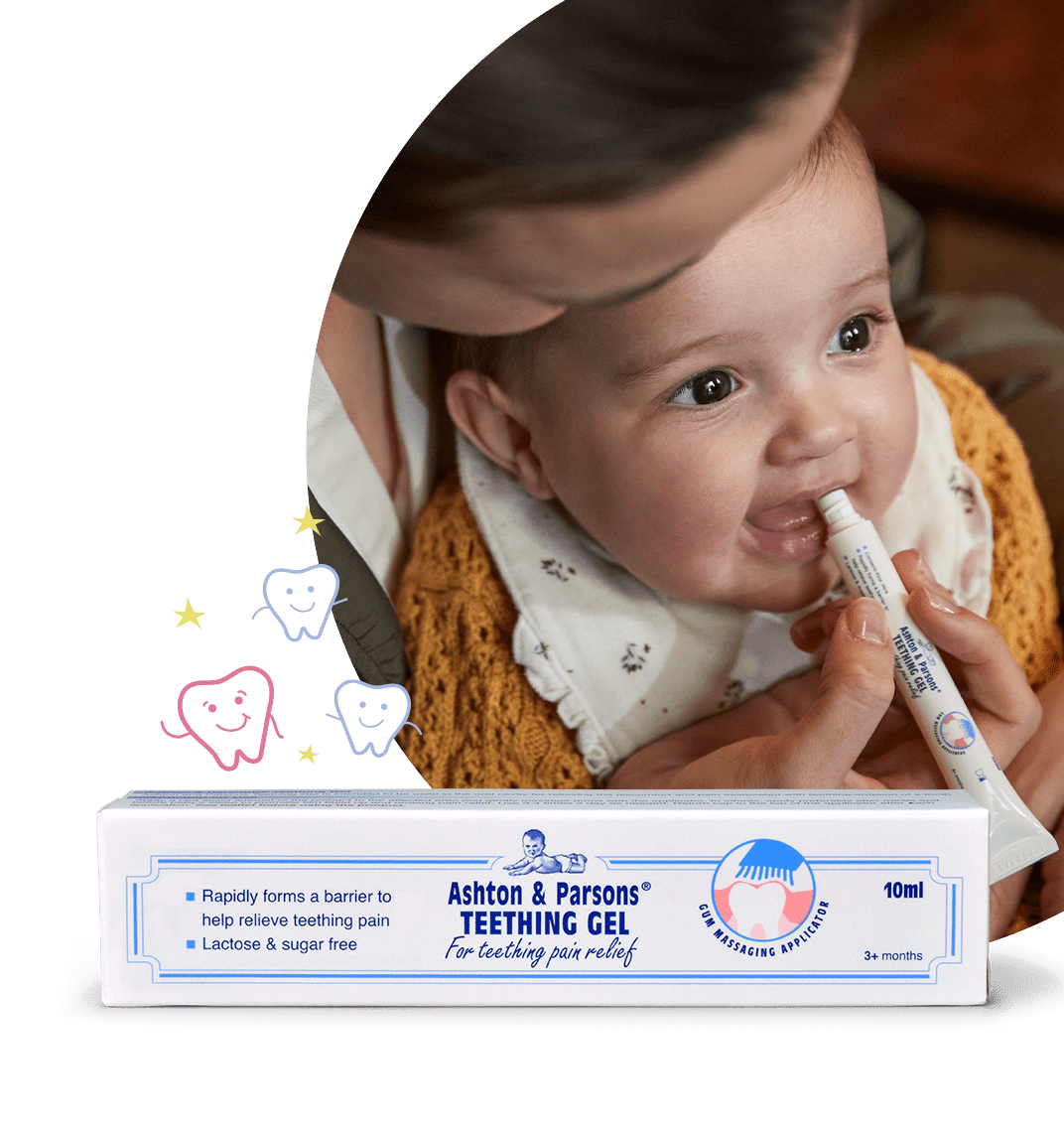How to cope with teething when you’re out and about
I’ve got three little ones now – all of whom have a healthy set of gnashers – but looking back, the days when they were having full-blown teething meltdowns were definitely some of the tougher times you face as a parent. (Oh, but if it’s any consolation, I can 100% guarantee that coping with teething, like everything else baby-focused, gets easier the second and third times around. By child number nine I reckon I’ll be ALL OVER IT.)

I also found quite early on that dealing with teething when you’re at home is completely different to when you’re out and about. All my three went through those times when they’d go down for an hour or so, then wake up heartbreakingly unhappy with those tell-tale red cheeks and crying for England. And nothing seems to touch the pain they’re going through.
Of course, when you’re at home, that’s a lot easier to deal with; you’re more likely to have all your various teething remedies closer to hand, you can always play tag-team with your partner in terms of jiggling them backwards and forwards across the landing at 2am – and you can do all that while wearing leggings too grim for the gym and t-shirt you got from a company Away Day in 2009.
But when you’re out and about… not so much.
The main thing I remember struggling with – when my baby had a meltdown in, say, the local supermarket – was feeling like every single person in there was staring at you. Staring at you thinking “That woman is a terrible parent.” Reader, if there’s one thing I’d like you to take away from this blog, even if you don’t read any further, it’s this: Stop. Thinking. That. Way.
99% of the time, it simply won’t be true. Psychologists even have a name for it: the Spotlight Effect – a mistaken belief or feeling like you’re being noticed by other people, far more than you actually are.1 It tends to get heightened when you’re in a difficult or unusual situation – and your baby having a meltdown in the freezer aisle of your local Sainsbury’s would definitely fall into that category. The key thing is to realise is that it’s your brain playing tricks on you. So please, please, please cut yourself some slack. Everyone else is in their own little world just as much as you are.
And you know what? If there are people thinking that way – we’ve all seen them – the “Tut-ters”, I like to call them – ignore ‘em. Life’s too short. It really is.
So, if that’s my advice about being kinder to your own mental health, here’s a few other tricks I learnt along the way about helping your baby dealing with the pain of teething.
First up – and this won’t be too much of a surprise to anyone who takes their little one out and about – invest in a really great, comfy-to-carry (and most definitely wipe-clean) changing bag or rucksack. Even better, one that can go in the tumble dryer. I tended to go with rucksacks rather than shoulder-bags as they were less likely to fall off my shoulder when I was carrying (and particularly) picking my little ones up and down.
And then fill it with all whole heap of various teething helpers. Obviously, teething toys are a great way to help your baby tackle their teething pains – and often, I found the simplest toys did the best job, because what they need to do isn’t that complicated. Babies instinctively bite down on a teether to provide counter-pressure to a rising tooth, which helps them even out the pain. If you want to go one stage further, it’s worth investing in one of those toys you can keep chilled (I tended to put one or two in a Tupperware container along with one of those ice blocks you get with picnic sets, to help keep them cool.)
On the subject of keeping things cool, however, just a note here that the NHS says never to put teething rings in the freezer as any kind of extreme cold can damage your baby’s gums.2
If your baby’s started to move on to solid foods, the NHS also recommends giving them chilled – but not frozen – little pieces of fruit or vegetables like banana, apple or cucumber for them to chew.2 Not only will the chewing help with teething, the colder temperatures are meant to be soothing too; even better, if they’re enjoying a piece of their favourite food, that’s an even greater distraction and can sometimes mean they forget the pain of teething altogether for a while! If you’ve not got anything to keep food chilled, even something as simple as a breadstick or a crust of bread can do the job.
There’s also a whole range of different teething remedies. Ashton & Parsons Teething Gel gives your baby the comfort that a gel can give them, but via a neat little applicator built into the tube that acts like a soft little massaging brush. So not only does it help you put the gel straight onto their gums, you don’t need to worry about your baby giving your finger a nip! Even better, you can use the gel’s soft brush applicator to gently massage your baby’s gums, to help give them an extra little bit of soothing.
And of course, the final tool in your arsenal (and this is where being out and about scores far higher than being at home) is the old distraction routine. I definitely found that being out on a play date or just in a different environment gives you loads more opportunities to perk them up and take their minds off their teething. Especially if you’re with another parent who’s going through the same thing – plus you can share the load, swap teething tips and you can be pretty sure they’re not going to be one of the “tut-ters…”
So yes, it’s tough. It can be heartbreaking to see your little one laid low and feeling that – sometimes – nothing you do can cheer them up. But remember, as with all things, it really won’t last that long, there are little things you can do to cheer them up – and never, ever think you’re not doing a great job. You totally, 100% are. And if anyone disagrees, tell ‘em I said so.
1 https://www.psychologytoday.com/gb/blog/the-big-questions/201111/the-spotlight-effect
2 https://www.nhs.uk/conditions/pregnancy-and-baby/teething-tips/





